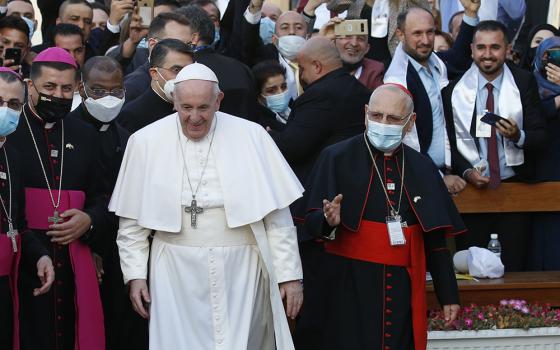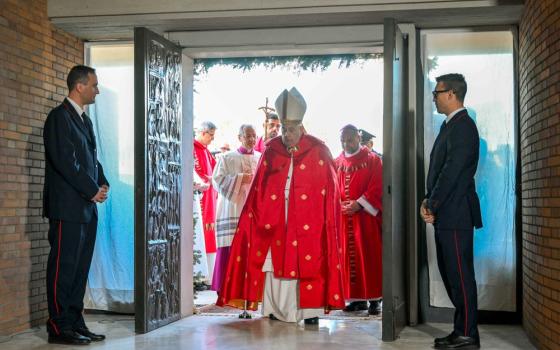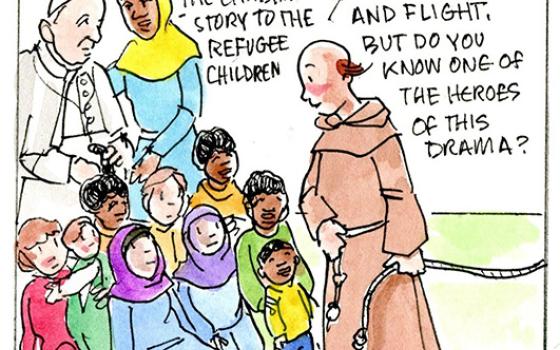I am not much for collecting things. I have never felt the need for items that trigger memories, neither pictures nor other memorabilia. Some days, I forget what day it is or forget to bring my suit to the dry cleaners, but I can remember the moments and encounters of my life without the stimulation of a thing.
But, every rule has exceptions, and I do proudly keep a copy of the Bosnian magazine, Oslobodjenje, which bravely continued to publish throughout the siege of Sarajevo, a polished bullet shell from that city of tears, and several photos. The magazine contains an article about the Bosnians who came to work at Kramer’s after escaping the violence in their homeland. There is even a picture of me sitting with two Bosnian friends at Kramerbooks café. One of them, Gigi, had gotten out by joining the Bosnian bobsled team at the Lillehammer Winter Olympics in 1994. He had never been on a bobsled before but it was a ticket out of Sarajevo. The entire team either worked at the café or came there every day for their espresso. A Bosnian chanteuse would sing once a month when we had live music. There were days when the bar was filled with people, most of them speaking Bosnian (they preferred not to call it Serbo-Croatian).
The Holy Father will travel to Sarajevo tomorrow. The city has not fully recovered from its horrors, but the horrors have stopped. People are no longer required to avoid sniper fire when going to the market. The ethnic inter-marriage rate has not returned to its pre-war levels when it, alone among the cities of Europe, rivaled the ethnic inter-marriage rate of the U.S. I recall this particular fact for a reason. During the debate about whether or not the U.S. should get involved in the effort to stop the war in the former Yugoslavia, many people said it was a European problem, but Sarajevo was different from other cities in Europe and America, which stands for the proposition that it doesn’t matter who your grandfather was, had, I believed, a special responsibility to defend a city that was also committed to that proposition. When the killing began, it started to matter a lot who your grandfather was or, more precisely, whether he went to the Orthodox church or the Catholic church or the mosque. Before the war, my Muslin Bosnian friends would recall, they would often accompany their Catholic friends to midnight Mass at Christmas.
My closest friend from those days was the bobsled team’s driver, Zoran, or Zoka as we called him. He had been on a bob before and would also lead the Bosnian team at the Nagano Winter Olympics in 1998. Ethnically, Zoka was a Serb, but his family decided to stay in Sarajevo. When the war began, his twin brother enlisted in the Bosnian army and was killed shortly thereafter. This weighed on my friend profoundly, survivor’s guilt in spades. At the café, he met many of my priest friends and one day he asked me if we could have a Catholic Mass for his Orthodox brother’s memory. I made some calls, we organized a group of waiters into a makeshift choir, a trumpeter from Boston flew down and the organist at the National Shrine volunteered. Eight priests showed up to concelebrate with the irreplaceable Monsignor Lorenzo Albacete delivering the homily. My friends at Theological College, the seminary attached to Catholic University, offered the use of their chapel. And, so, one evening, we gathered and prayed and sang and brought some measure of comfort and hope to my friend Zoka. I do not know if I have ever been more proud of my Church than I was at that moment. I can still remember Lorenzo’s words about death, that the fear of death is, at root, its abysmal loneliness and how the Mass in which we were sharing was evidence of the ability of human beings touched by grace to overcome that fear and banish that loneliness.
Pope Francis will go to a scarred city, not a wounded city. A scar is testimony to what was once a wound but a wound that has been healed. I am sure there is still some healing going on in Bosnia. One does not ever really find “closure” when one’s brother is killed. But, I hope the Holy Father can do what we did in the chapel at Theological College, renew our Catholic faith in the proposition that we are heirs to the Kingdom of God by the grace of Jesus Christ, that his conquering of death is now made available to us, to all of us.
There are some public policy lessons from Bosnia, of course. Sometimes, American military intervention is the solution. The idea that religion breeds ancient hatreds was, in the context of Bosnia, a bit of propaganda foisted by the criminal gang that then ruled Serbia: In fact, the people of Sarajevo had learned to live side by side in peace, and had done so for many years. We should not always and reflexively think that religious divisions are any more resistant to grace than are other divisions, indeed, they should be the most open to grace. The Holy Father’s trip will provide a strong boost to the idea that inter-religious dialogue is a thing worth pursuing for its own sake. Certainly, his visit will be a boost for all Bosnians, Catholic and non-Catholic alike, a reminder that while they were alone and desperate for years during the siege, they are not alone now and they are not forgotten and they are no longer hopeless.
I learned last week that one of the Bosnians with whom I used to work at Kramer’s who has gone on to be a well known artist, Edina Seleskovic, has made a sculpture that will be presented to the Holy Father. There was a photo of her with the Apostolic Nuncio in Oslobodjenje. Maybe I will keep a copy of that around too.




